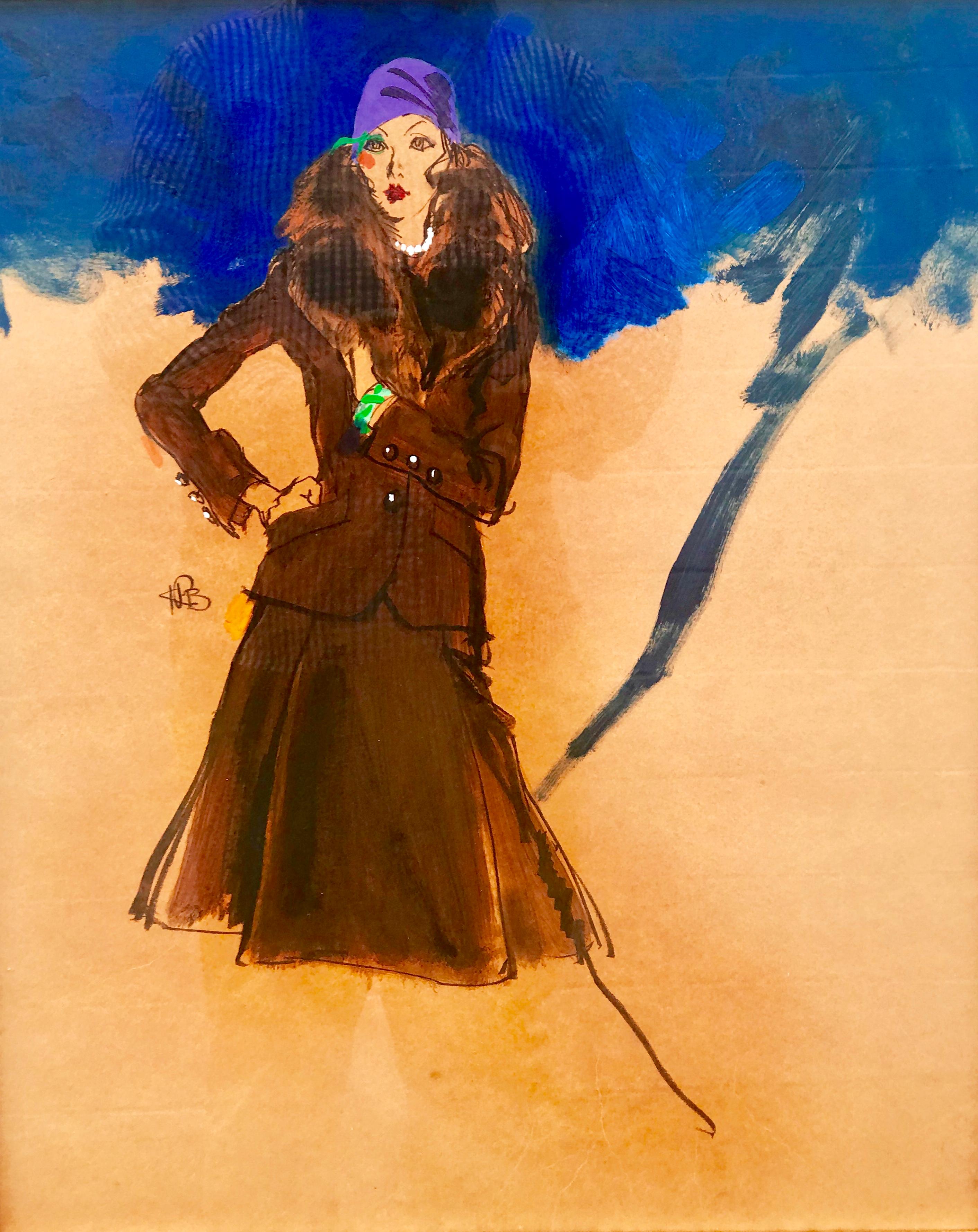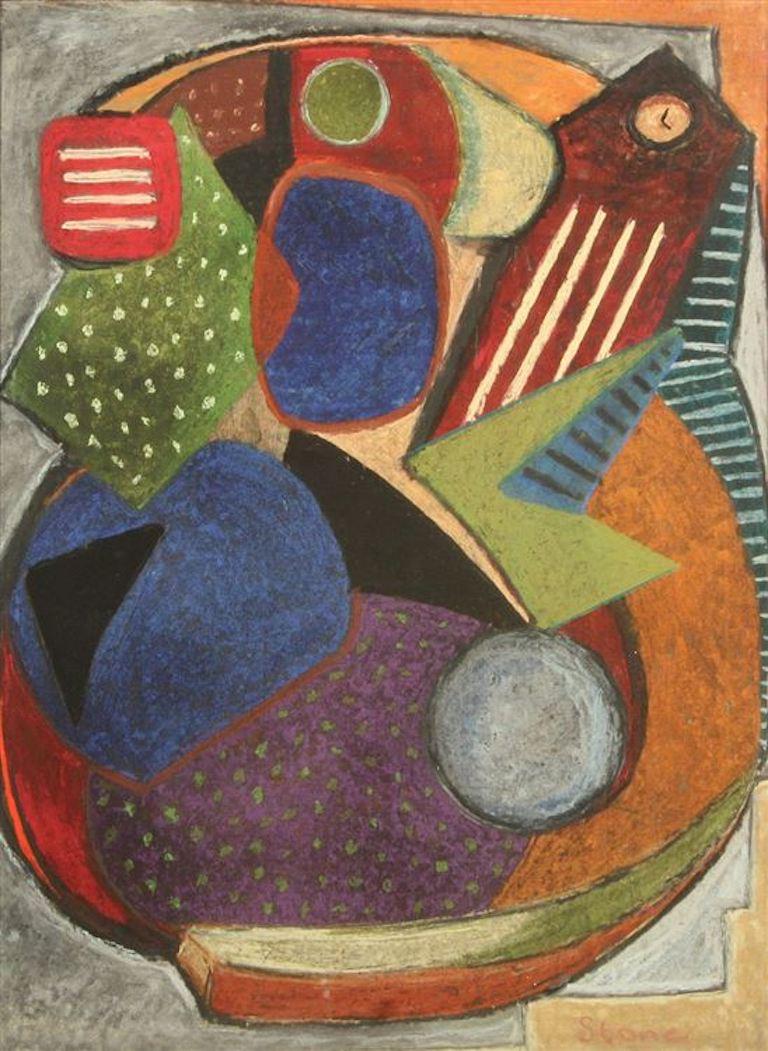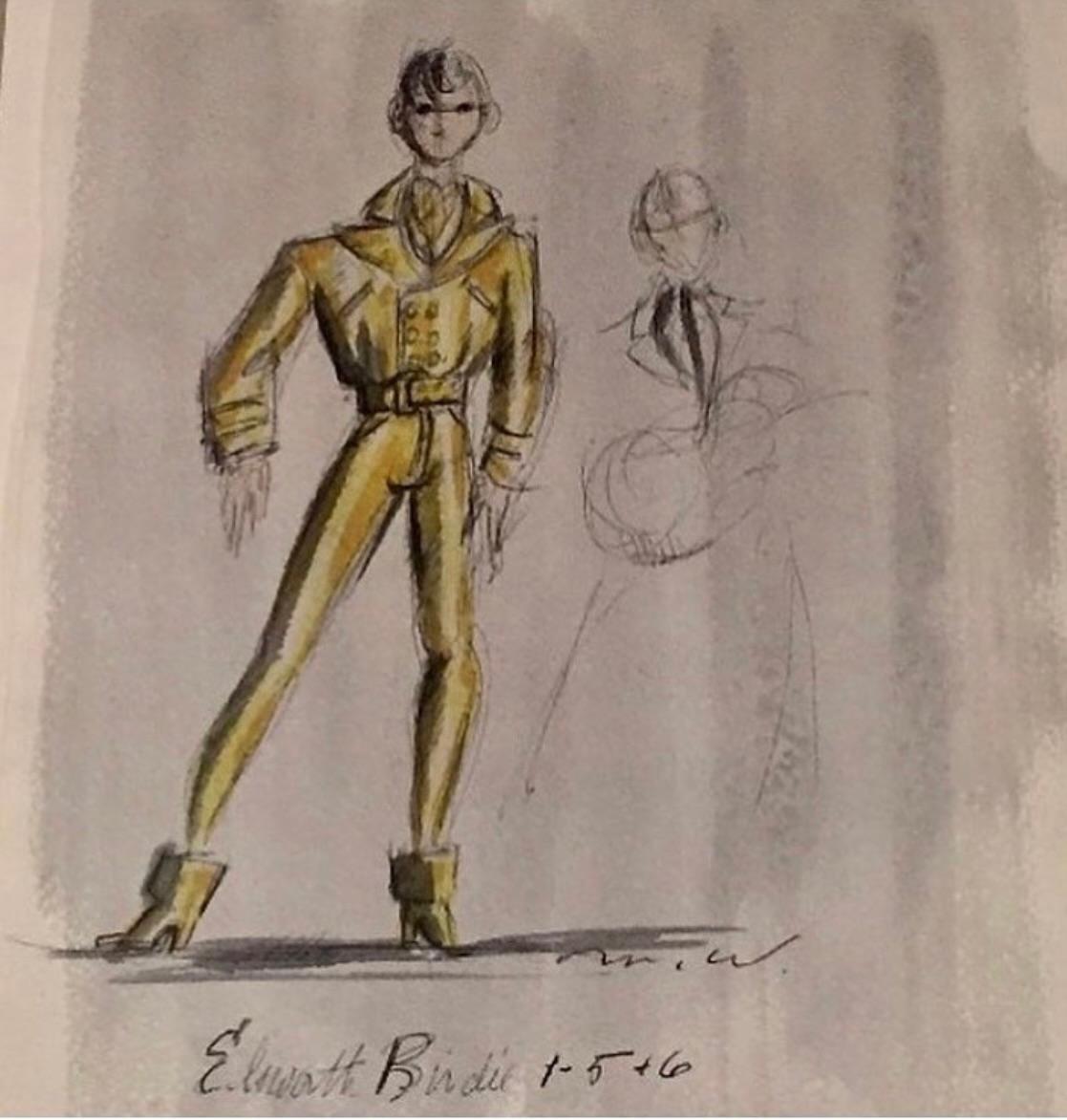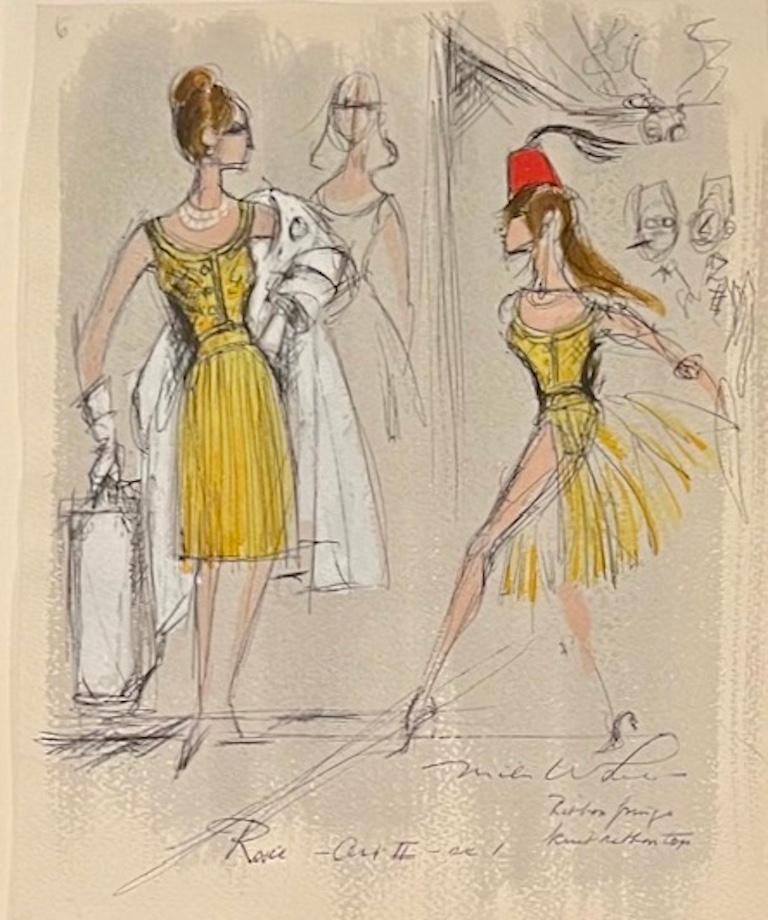Items Similar to Wilhelmina Barns-Graham’s card for Sandra Blow’s 75th birthday (1995) collage
Want more images or videos?
Request additional images or videos from the seller
1 of 6
Wilhelmina Barns-GrahamWilhelmina Barns-Graham’s card for Sandra Blow’s 75th birthday (1995) collage1995
1995
About the Item
To see our other Modern British Art, scroll down to "More from this Seller" and below it click on "See all from this Seller" - or send us a message if you cannot find the artist you want.
Wilhelmina Barns-Graham (1912 – 2004)
Card for Sandra Blow’s 75th birthday (1995)
Gouache and collage
34 x 21 cm
Inscribed to reverse “For Sandra, Happy Birthday, with love Willie, 13/9/95”.
Barns-Graham’s modern design features 70 vividly coloured circles; each one is different from the last, but all are geometrically aligned in neat rows and columns. Sandra Blow’s initials appear separately as “S” and “B” in the design. Blow and Barns-Graham became friends in the 1950s; both spent lengthy periods of time in St Ives, and made major contributions to Britain’s catalogue of post-war art.
Wilhelmina Barns-Graham, known as Willie, was born in St Andrews, Fife, on 8 June 1912. Her parents were second cousins, and their respective families were well established representatives of minor Scottish gentry from both the east and west of the country.
As a child, Barns-Graham showed very early signs of creative ability. It was at school that Wilhelmina decided that she wanted to be an artist, stating later in life that “painting chose me, not I it”. After school she set her sights on Edinburgh College of Art where, after some dispute with her father (who was an emotional man prone to uncontrolled anger), she enrolled in 1931. During her time at Edinburgh College, Barns-Graham was taught by tutors including portrait painter David Alison and painter William MacTaggart. Her friends there included the influential Scottish painters Robert MacBryde, Robert Colquhoun, and William Gear.
After her education, Barns-Graham made study trips to Paris, London, and St Tropez before moving to St Ives, Cornwall, in 1940 (at the suggestion of the Edinburgh College of Art’s Principal Hubert Wellington). Barns-Graham moved near to where a group of modernist artists had settled, at Carbis Bay – this was a pivotal moment in her life. On one of her first evenings there she met the sculptor Barbara Hepworth, who made an immediate and lasting impression on her. She then went on to meet Borlase Smart, Alfred Wallis, and Bernard Leach, as well as the painter Ben Nicholson and the sculptors Naum Gabo and Margaret Mellis. After two weeks in St Ives, Barns-Graham acquired her first studio, directly below the Porthmeor Gallery which was the administrative headquarters of the St Ives Society of Artists. Her paintings at the time were heavily influenced by the Cornish landscapes and the St Ives harbour. During 1940 and 1941, Barns-Graham contributed to the war effort by volunteering in a factory making camouflage nets.
In 1942 Barns-Graham became a member of the Newlyn Society of Artists, in which she exhibited with every year, and the St Ives Society of Artists. Whilst establishing herself in St Ives, Barns-Graham also continued to send work back to Scotland for major exhibitions held there such as the Royal Scottish Academy’s 117th Exhibition in 1943. The 1940s were an active time for the St Ives Society of Artists who received a number of invitations to send exhibitions and groups of works to galleries in the UK and abroad, Barns-Graham’s work was always included in these as the Society’s secretary, Borlase Smart, thought highly of her work.
Barns-Graham’s first opportunity to exhibit in London came when her work was included in a group exhibition of six at the Redfern Gallery. This was due to the introduction and support of Patrick Heron, who had visited Barns-Graham’s studio in St Ives and was excited by her work. Barns-Graham would later have her first one-person exhibition in London at Redfern in 1952.
After a few years of tension, Barns-Graham eventually left the St Ives Society of Artists in 1949, becoming one of the founding members of a new breakaway group named Penwith Society of Arts. The first Penwith Society exhibition opened in June 1949 to huge success – 2755 paying visitors came to see it.
Provenance: the Jonathan Grimble Estate; the Sandra Blow Estate.
- Creator:Wilhelmina Barns-Graham (1912 - 2004)
- Creation Year:1995
- Dimensions:Height: 13.39 in (34 cm)Width: 8.27 in (21 cm)
- Medium:
- Movement & Style:
- Period:
- Condition:Very good; in original frame.
- Gallery Location:London, GB
- Reference Number:1stDibs: LU795311871512
About the Seller
4.8
Gold Seller
These expertly vetted sellers are highly rated and consistently exceed customer expectations.
Established in 2014
1stDibs seller since 2017
277 sales on 1stDibs
Typical response time: <1 hour
- ShippingRetrieving quote...Ships From: London, United Kingdom
- Return PolicyA return for this item may be initiated within 14 days of delivery.
More From This SellerView All
- Gladys Williamson, 'Lady With a Parrot' Gouache Art Deco Poster Design (c.1931)By Gladys WilliamsonLocated in London, GBTo see our other Modern British Art, scroll down to "More from this Seller" and below it click on "See all from this Seller" - or send us a message if you cannot find the artist you want. Gladys Williamson (1914 - 2007) 'Lady With A Parrot...Category
1930s Modern Figurative Paintings
MaterialsGouache
- Laurence Dunn, SS Denmark Maru (c.1927) Merchantman Tramp Steamer paintingBy Laurence DunnLocated in London, GBTo see our other Modern British Art, scroll down to "More from this Seller" and below it click on "See all from this Seller" - or send us a message if you cannot find the artist you want. We also have several more ship drawings...Category
1920s Modern Landscape Drawings and Watercolors
MaterialsInk, Gouache
- Laurence Dunn, SS Zrinski (c.1925) Merchantman Tramp SteamerBy Laurence DunnLocated in London, GBTo see our other Modern British Art, scroll down to "More from this Seller" and below it click on "See all from this Seller" - or send us a message if you cannot find the artist you want. We also have several more ship drawings...Category
1920s Modern Landscape Drawings and Watercolors
MaterialsInk, Gouache
- Laurence Dunn, SS Pinhel Lisboa (c.1927) Merchantman Tramp Steamer watercolourBy Laurence DunnLocated in London, GBTo see our other Modern British Art, scroll down to "More from this Seller" and below it click on "See all from this Seller" - or send us a message if you cannot find the artist you want. We also have several more ship drawings...Category
1920s Modern Landscape Drawings and Watercolors
MaterialsInk, Gouache
- Robert Bonfils Bianchini Ferier 1920 art deco scarf design Bullfighting: pinkBy Robert BonfilsLocated in London, GBFrom a series of designs by Robert Bonfils for Bianchini Ferrier, to see some others, scroll down to "More from this Seller" and below it click on "See all from this Seller." Rober...Category
1920s Modern Animal Drawings and Watercolors
MaterialsGouache, Carbon Pencil
- Barclays Bank 1964 architectural drawing. Design by JDM Harvey, London, EnglandBy John Dean Monroe HarveyLocated in London, GBJohn Dean Monroe Harvey (1895-1978) A design for Barclays Bank, Walthamstow, London, England, UK (1964) Gouache 41 x 60 cm Signed and dated 1964. A very fine architectural perspe...Category
1960s Modern Landscape Drawings and Watercolors
MaterialsGouache, Pencil
You May Also Like
- “Woman with Purple Hat”By Kenneth Paul BlockLocated in Southampton, NYHere for your consideration is a wonderful mixed media fashion illustration by the world renowned fashion artist, Kenneth Paul Block. Signed with initials middle left. Circa 1955. Co...Category
1950s American Modern Mixed Media
MaterialsWatercolor, Acrylic, Gouache, Archival Paper
- “Jester”By Rolph ScarlettLocated in Southampton, NYEarly mixed media painting composed of watercolor, gouache and oil pastel on card stock of a jester by the Canadian/American artist, Rolph Scarlett. Signed by the artist lower right ...Category
1920s American Modern Mixed Media
MaterialsOil Pastel, Watercolor, Gouache
- Abstract Mid 20th Century WPA Non Objective American Modernism New Hope ModernBy Louis StoneLocated in New York, NYAbstract Mid 20th Century WPA Non Objective American Modernism New Hope Modern.mixed media. 21 x 16 (sight). Housed in a hand carved frame. Louis King Stone ...Category
1940s American Modern Mixed Media
MaterialsGouache, Board
- BYE BYE BIRDIE Original 1960 Broadway Musical Costume Drawing Tony Award ElvisLocated in New York, NYBYE BYE BIRDIE Original 1960 Broadway Musical Costume Drawing Tony Award Elvis Miles White (1915 – 2000) BYE BYE BIRDIE 11 x 8 inches Mixed Media on Paper Signed Lower Right Framed by Bark Affixed to the back are original gold lame fabric swatches. This drawing is available, along with two other original costume drawings from BIRDIE by Miles White, another of Conrad Birdie and one of Chita Rivera. Miles White, a leading Broadway and Hollywood costume designer for decades. created costumes for the original Broadway productions of OKLAHOMA CAROUSEL, BYE BYE BIRDIE and many others. In film he worked on "Around the World in 80 Days" and "The Greatest Show on Earth." He designed Ringling Bros and Barnum & Bailey Circus, and the Ice Capades for many years. Miles was a close friend for the last 20 years of his life. We live with one of his two Tony Awards and a dozen drawings. BYE BYE BIRDIE is a stage musical with music by Charles Strouse and lyrics by Lee Adams, based upon a book by Michael Stewart...Category
1960s American Modern Figurative Drawings and Watercolors
MaterialsWatercolor, Gouache, Pencil
- Chita Rivera BYE BYE BIRDIE Original 1960 Broadway Costume Drawing Tony AwardsLocated in New York, NYChita Rivera BYE BYE BIRDIE Original 1960 Broadway Costume Drawing Tony Awards Miles White (1915 – 2000) ChITA RIVERA in BYE BYE BIRDIE 11 x 8 inches M...Category
1960s American Modern Figurative Drawings and Watercolors
MaterialsWatercolor, Gouache, Pencil
- MODERNIST DRAWING New Hope Mid-Century WPA Abstract Non-Objective Jazz ModernBy Ramstonev (Ramsey/Stone/Evans co-operative)Located in New York, NYMODERNIST DRAWING New Hope Mid-Century WPA Abstract Non-Objective Jazz Modern. Signed with a "Ramstonev" stamp lower right. RAMSTONEV Cooperative Art Project (1937-1939). In the late 1930s, Charles Ramsey became close friends with Charles Evans and Louis Stone. He persuaded them to join him teaching his New Hope summer classes in non-objective painting. Soon, a history-making collaboration began. In 1937, meeting in Evans' studio at the rear of Cryer's Hardware store on Main Street in New Hope, a decision was made to establish the Co-Operative Painting Project. They were intrigued by the cooperative ad-lib process by which jazz musicians created their music. Believing this to be the quintessential American contribution to music, they theorized that a similar result might be obtainable with art, a "visual jam session." This particlarly fascinated Ramsey, who was a jazz buff and had a large collection of jazz records. The objective was to jointly collaborate in the creation of a painting as well as applying collective criticism during its creation. By creating forward movement by general consent, they believed they could produce a higher level of beauty. By consensus it was decided that subject matter would be non-objective. Up to eight people would participate and stop when the painting "felt" finished by common agreement. These co-operative works were done in several different mediums- the majority in pastel, but some in watercolor, gouache, graphite or cut paper collage. On occasion, the group would create a series, as opposed to a single work, created in steps by three or four artists. One of the occasional participants was famed New Hope poet, Stanley Kunitz. These series could range in number from four to sixteen paintings in each. The first of a series would be very basic and the last a fully finished work. In the scope of importance among the New Hope Modernist...Category
1930s American Modern Abstract Drawings and Watercolors
MaterialsGouache, Paper, Watercolor





